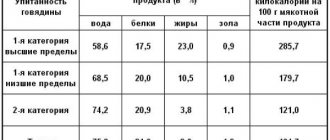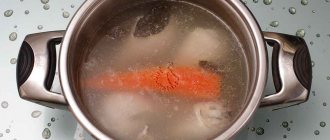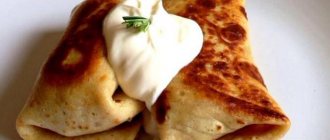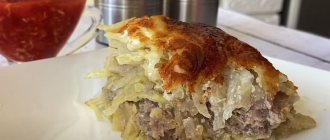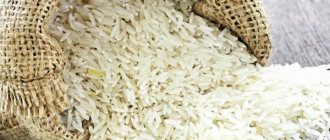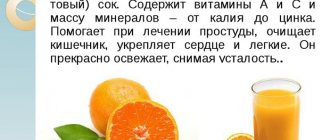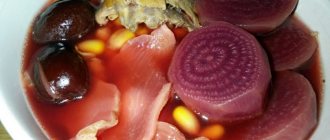Properties of the sap
Nutritional value and composition | Vitamins | Minerals
How much does a juicer cost (average price for 1 piece)?
Moscow and Moscow region.
60 rub.
When the word sochnik is mentioned, most residents of our latitudes see a picture of Soviet pastries with cottage cheese. Some people call Sochniki a bun from childhood, because... During school years, any Soviet child constantly ate healthy buns with cottage cheese called sochnik. It is noteworthy that the bakery product sochnik received its name thanks to the old Russian culinary term sochen. The word sochen was used to describe a rolled out layer of dough.
Over time, the word sochen began to be used to describe a bakery product that was made from thinly rolled dough, which was stuffed with cottage cheese. Moreover, the flatbread was very different in its original semicircular shape and ease of preparation. Thus, we can say that sochnik belongs to the ancient Russian types of bakery products, the recipe of which has survived to this day almost in its original form. This is truly a rarity, especially considering the centuries-old history of Sochnik.
In the USSR, Sochniks were extremely popular. some might say there wasn't much choice in those days. However, we hasten to object, because. And in our time of culinary abundance, sochniki enjoy stable popularity among domestic buyers. We think this is due, first of all, to the recipe and chemical composition of the product. Sochnik is distinguished by its original and unique taste, thanks to the recipe and method of making baked goods.
Sochnik is famous not only for its taste, aroma and other consumer characteristics. The vitamin and mineral composition of the juice is enriched with beneficial natural compounds. In addition, the bakery product is made with cottage cheese, and this product is considered a real storehouse of vitamins and useful biologically active substances. The calorie content of the juicer is at a fairly high level and amounts to 274 Kcal, which are per 100 grams of the product.
On the one hand, this level of calorie content of the juice prevents the inclusion of the bakery product in the list of dietary foods. However, it should be noted that with moderate consumption of the product, juicer will not be able to cause significant damage to your health or figure. Sochniki can be purchased in most bakery departments of domestic grocery stores. However, a store-bought juicer will never be able to compare in taste to homemade baked goods.
In accordance with the classic Sochnik recipe, to make a baked product you will need the following set of ingredients: butter (70 g), flour (2.5 cups), sugar, one egg, sour cream (4 tablespoons), and 1/4 teaspoons of baking soda. From the above ingredients you need to knead the dough. For the filling, mix cottage cheese or curd mass with sour cream, chicken egg and flour. It is better to roll the dough into a ball and divide into equal parts. Roll small pieces of dough into balls. Then roll out the dough and fill it with cottage cheese and lightly pinch the edges of the juicer. Sochniki are baked at a temperature of 200C on a baking sheet in the oven. Fresh homemade juices with cottage cheese will leave few people indifferent.
Vitamins in Sochniki with cottage cheese
Sochniki with cottage cheese contains the following vitamins: Mono- and disaccharides, Cholesterol, Ash, Starch, Water, Organic acids, Dietary fiber, Unsaturated fatty acids, Sodium, Potassium, Phosphorus, Magnesium, Calcium, Sulfur, Copper, Boron, Silicon, Aluminum, Titanium, Iodine, Manganese, Chromium, Fluorine, Molybdenum, Vanadium, Cobalt, Nickel, Selenium, Tin, Zinc, Iron, Chlorine.
| Vitamin | Meaning |
| Vitamin B1 (thiamine), mg | 0,05 |
| Vitamin B2 (riboflavin), mg | 0,2 |
| Vitamin B6 (pyridoxine), mg | 0,06 |
| Vitamin B9 (folic), mcg | 7,5 |
| Vitamin C, mg | 0,07 |
| Vitamin E (TE), mg | 1 |
| Vitamin PP (Niacin equivalent), mg | 1,9936 |
| Vitamin B12 (cobalamins), mcg | 0,07 |
| Vitamin D, mcg | 0,3 |
| Vitamin A, mg | 0,09 |
| Choline, mg | 45,4 |
| Vitamin A (VE), mcg | 90 |
| Vitamin B5 (pantothenic), mg | 0,2 |
| Vitamin PP, mg | 0,4 |
| Vitamin H (biotin), mcg | 3,1 |
Contents of the BZHU
The content of key nutrients in the ingredients of curd juices is usually calculated per 100 g of product.
Considering that the average weight of one dessert is approximately 50 g, the amount of proteins, fats and carbohydrates in the dessert will be 4.8 g, 4.9 g, 18 g, respectively.
In addition to BZHU, sochniki with cottage cheese also includes dietary fiber (at least 1.5 g, which is up to 6% of the daily value) and water (at least 34 g, which is at least 1.3% of the recommended daily amount).
Sochnik with cottage cheese. Calorie content 1 piece, per 100 grams, BJU. Recipes according to GOST in the oven, multicooker
The calorie content of dishes is a determining factor when creating a diet for those losing weight.
People who keep their figure in shape are recommended to include dietary baked goods in their menu as desserts, which should contain healthy ingredients. One of the most suitable options in this case is a juicer with cottage cheese. You should choose a specific recipe not only taking into account individual preferences, but also the ratio of calories, as well as the composition of the main nutrients (proteins, fats and carbohydrates).
What does the energy value of juicy curds depend on?
The calorie content (or energy value) of juicers with cottage cheese depends on a number of factors:
- fat content of cottage cheese used in preparing the dish;
- type of dough, the calorie content of which is also determined by its ingredients;
- the amount of sugar used to neutralize the sour taste of the fermented milk product - cottage cheese;
- the presence of minor ingredients (for example, yogurt, berries or dried fruits);
- the type of flour used not only for kneading the dough, but also to increase the thickness of the curd filling;
- cooking method (baking or frying);
- method of serving the dish (does it require sprinkling with powdered sugar, decoration with berries, fruits, ice cream, etc.).
Calorie analysis
Despite the fact that sochniki with cottage cheese can be included in the diet of people trying to lose weight, the dessert prepared according to the classic recipe is not dietary.
The main part of the carbohydrates included in baked goods is fast, which determines the high probability of increasing the fat layer, rather than converting them into energy, in the case of indiscriminate consumption of juicy curds. Children under 5 years old, as well as adults with diseases of the gastrointestinal tract and those losing weight, should eat this dessert no more than 1-2 times a week.
Low-calorie juice recipe
Homemade juices undoubtedly turn out tasty and aromatic. It can be difficult to resist eating too much.
You can bake a sochnik with cottage cheese, the calorie content of which will be low.
For this you need the following set of products:
- whole grain wheat flour - 200 grams;
- kefir - 200 grams;
- granulated sugar - 200 grams;
- chicken egg - 1 pc.;
- low-fat cottage cheese - 450 grams;
- vanilla sugar - 5 sachets.
For the filling: grind cottage cheese with 50 grams of granulated sugar, one packet of vanillin and the white of one egg.
For the dough: mix wheat and corn flour, add kefir and four bags of vanillin. Mix everything well. Form the dough.
Roll out the dough into a plate one and a half or two centimeters thick, cut out circles for juicers from it. Place the filling on half of each piece, fold the circle in half and lightly mold the juicer. Next, brush each pie with yolk and bake at 200 or 210 degrees for about 25 minutes until golden brown. The calorie content of 1 juicer with cottage cheese according to this recipe will be low.
Calorie content Sochnik. Chemical composition and nutritional value.
Nutritional value and chemical composition of Sochnik.
The table shows the nutritional content (calories, proteins, fats, carbohydrates, vitamins and minerals) per 100 grams of edible portion.
| Nutrient | Quantity | Norm** | % of the norm in 100 g | % of the norm in 100 kcal | 100% normal |
| Calorie content | 330 kcal | 1684 kcal | 19.6% | 5.9% | 510 g |
| Squirrels | 11 g | 76 g | 14.5% | 4.4% | 691 g |
| Fats | 18 g | 56 g | 32.1% | 9.7% | 311 g |
| Carbohydrates | 60 g | 219 g | 27.4% | 8.3% | 365 g |
| Organic acids | 47.8 g | ~ | |||
| Alimentary fiber | 1.3 g | 20 g | 6.5% | 2% | 1538 g |
| Water | 34.1 g | 2273 g | 1.5% | 0.5% | 6666 g |
| Ash | 0.7 g | ~ | |||
| Vitamins | |||||
| Vitamin A, RE | 90 mcg | 900 mcg | 10% | 3% | 1000 g |
| Retinol | 0.09 mg | ~ | |||
| Vitamin B1, thiamine | 0.05 mg | 1.5 mg | 3.3% | 1% | 3000 g |
| Vitamin B2, riboflavin | 0.2 mg | 1.8 mg | 11.1% | 3.4% | 900 g |
| Vitamin B4, choline | 45.4 mg | 500 mg | 9.1% | 2.8% | 1101 g |
| Vitamin B5, pantothenic | 0.2 mg | 5 mg | 4% | 1.2% | 2500 g |
| Vitamin B6, pyridoxine | 0.06 mg | 2 mg | 3% | 0.9% | 3333 g |
| Vitamin B9, folates | 7.5 mcg | 400 mcg | 1.9% | 0.6% | 5333 g |
| Vitamin B12, cobalamin | 0.07 mcg | 3 mcg | 2.3% | 0.7% | 4286 g |
| Vitamin C, ascorbic acid | 0.07 mg | 90 mg | 0.1% | 128571 g | |
| Vitamin D, calciferol | 0.3 mcg | 10 mcg | 3% | 0.9% | 3333 g |
| Vitamin E, alpha tocopherol, TE | 1 mg | 15 mg | 6.7% | 2% | 1500 g |
| Vitamin H, biotin | 3.1 mcg | 50 mcg | 6.2% | 1.9% | 1613 g |
| Vitamin RR, NE | 1.9936 mg | 20 mg | 10% | 3% | 1003 g |
| Niacin | 0.4 mg | ~ | |||
| Macronutrients | |||||
| Potassium, K | 78.5 mg | 2500 mg | 3.1% | 0.9% | 3185 g |
| Calcium, Ca | 60.9 mg | 1000 mg | 6.1% | 1.8% | 1642 g |
| Silicon, Si | 0.9 mg | 30 mg | 3% | 0.9% | 3333 g |
| Magnesium, Mg | 11.6 mg | 400 mg | 2.9% | 0.9% | 3448 g |
| Sodium, Na | 35.9 mg | 1300 mg | 2.8% | 0.8% | 3621 g |
| Sera, S | 41.7 mg | 1000 mg | 4.2% | 1.3% | 2398 g |
| Phosphorus, P | 101.9 mg | 800 mg | 12.7% | 3.8% | 785 g |
| Chlorine, Cl | 757.3 mg | 2300 mg | 32.9% | 10% | 304 g |
| Microelements | |||||
| Aluminium, Al | 247.3 mcg | ~ | |||
| Bor, B | 8.7 mcg | ~ | |||
| Vanadium, V | 21.2 mcg | ~ | |||
| Iron, Fe | 0.8 mg | 18 mg | 4.4% | 1.3% | 2250 g |
| Yod, I | 3 mcg | 150 mcg | 2% | 0.6% | 5000 g |
| Cobalt, Co | 1.9 mcg | 10 mcg | 19% | 5.8% | 526 g |
| Manganese, Mn | 0.1412 mg | 2 mg | 7.1% | 2.2% | 1416 g |
| Copper, Cu | 37.8 mcg | 1000 mcg | 3.8% | 1.2% | 2646 g |
| Molybdenum, Mo | 5.1 mcg | 70 mcg | 7.3% | 2.2% | 1373 g |
| Nickel, Ni | 0.5 mcg | ~ | |||
| Tin, Sn | 1.2 mcg | ~ | |||
| Selenium, Se | 1.4 mcg | 55 mcg | 2.5% | 0.8% | 3929 g |
| Titanium, Ti | 2.6 mcg | ~ | |||
| Fluorine, F | 12.4 mcg | 4000 mcg | 0.3% | 0.1% | 32258 g |
| Chromium, Cr | 1 mcg | 50 mcg | 2% | 0.6% | 5000 g |
| Zinc, Zn | 0.3218 mg | 12 mg | 2.7% | 0.8% | 3729 g |
| Digestible carbohydrates | |||||
| Starch and dextrins | 14 g | ~ | |||
| Mono- and disaccharides (sugars) | 1.3 g | max 100 g | |||
| Sterols (sterols) | |||||
| Cholesterol | 78.4 mg | max 300 mg |
The energy value of Sochnik is 330 kcal.
Primary Source: Created in the application by the user. Read more.
** This table shows the average levels of vitamins and minerals for an adult. If you want to know the norms taking into account your gender, age and other factors, then use the “My Healthy Diet” application.
Calorie content per 100 g, 1 pc.
To understand whether it is acceptable to include juicers with cottage cheese in the diet of a particular person who knows his daily calorie intake, it is recommended to use the table below for the calorie content of the dessert. It analyzes the most popular formulation options (including dietary):
| Dessert Features | Calorie content 100 g | Calorie content 1 pc. (about 50 g) |
| Sochniki according to GOST | 320 Kcal | 160 Kcal |
| Shortcrust pastry juicers | 344 Kcal | 172 Kcal |
| Sochniki made from choux pastry | 350 Kcal | 175 Kcal |
| Sochniki on kefir | 330 Kcal | 165 Kcal |
| Sochniki with sour cream | 400 Kcal | 200 Kcal |
| Oatmeal juices | 310 Kcal | 155 Kcal |
| Sochniki according to Dukan's recipe | 200 Kcal | 100 Kcal |
Step-by-step recipes for delicious sochniki with cottage cheese for regular and diet menus
It is recommended to select ingredients and recipes for preparing sochniki with cottage cheese, taking into account the menu they are intended for - regular or dietary.
According to GOST from butter dough
Sochnik with cottage cheese (the calorie content of a dessert prepared according to GOST is about 350 Kcal) from butter dough for its preparation requires:
| The product's name | Its required quantity |
| Cottage cheese | 450 g |
| Chicken eggs | 4 things. |
| Granulated sugar | 80 g |
| Powdered sugar | 100 g |
| Butter | 200 g |
| Baking powder | 10 g |
| Wheat flour | 500 g |
| Milk | 40 g |
| Salt | Taste |
The dessert preparation algorithm looks like this:
- Break 2 eggs into a deep bowl and then beat them with a mixer or hand whisk until smooth.
- Next, add powdered sugar to the eggs, then continue beating the mixture until the sweetener is completely dissolved.
- Place slightly melted butter, salt, wheat flour and baking powder in a bowl, then mix all the ingredients and knead the dough with your hands.
- After the dough is ready, it must be divided into 10-12 small balls, put them on a flat dish, cover with a towel and let rest for 20-30 minutes.
- While the dough reaches the desired condition, it is recommended to prepare the curd filling. To do this, mix cottage cheese, eggs, a small amount of flour and granulated sugar.
- Then you need to roll out each ball of dough, fill it with curd mass, and then glue the edges of the juicer.
- The optimal baking time for dessert in the oven is 20 minutes. at a temperature of no more than 200 degrees Celsius.
Chemical composition of the dish
The chemical composition of sochniki with cottage cheese illustrates the presence of nutrients that have a positive effect on the human ingredient:
- vitamin A (about 10% of the daily value);
- B vitamins (in particular, B1, B2, B5, B6, B9, B12 at a concentration of 3%, 12%, 4%, 3% and 2%, respectively);
- choline (no more than 9% of the recommended amount);
- vitamin D (no more than 3% of the daily value);
- vitamin E (about 7% of the daily value);
- PP (about 10% of the recommended volume);
- potassium (about 3%);
- calcium (at least 6%);
- silicon (no more than 3%);
- magnesium (up to 3%);
- sodium (up to 3%);
- phosphorus (about 13% of the daily value);
- chlorine (more than 30% of the recommended amount);
- iron (at least 3%);
- iodine (about 2%);
- zinc (no more than 3%).


